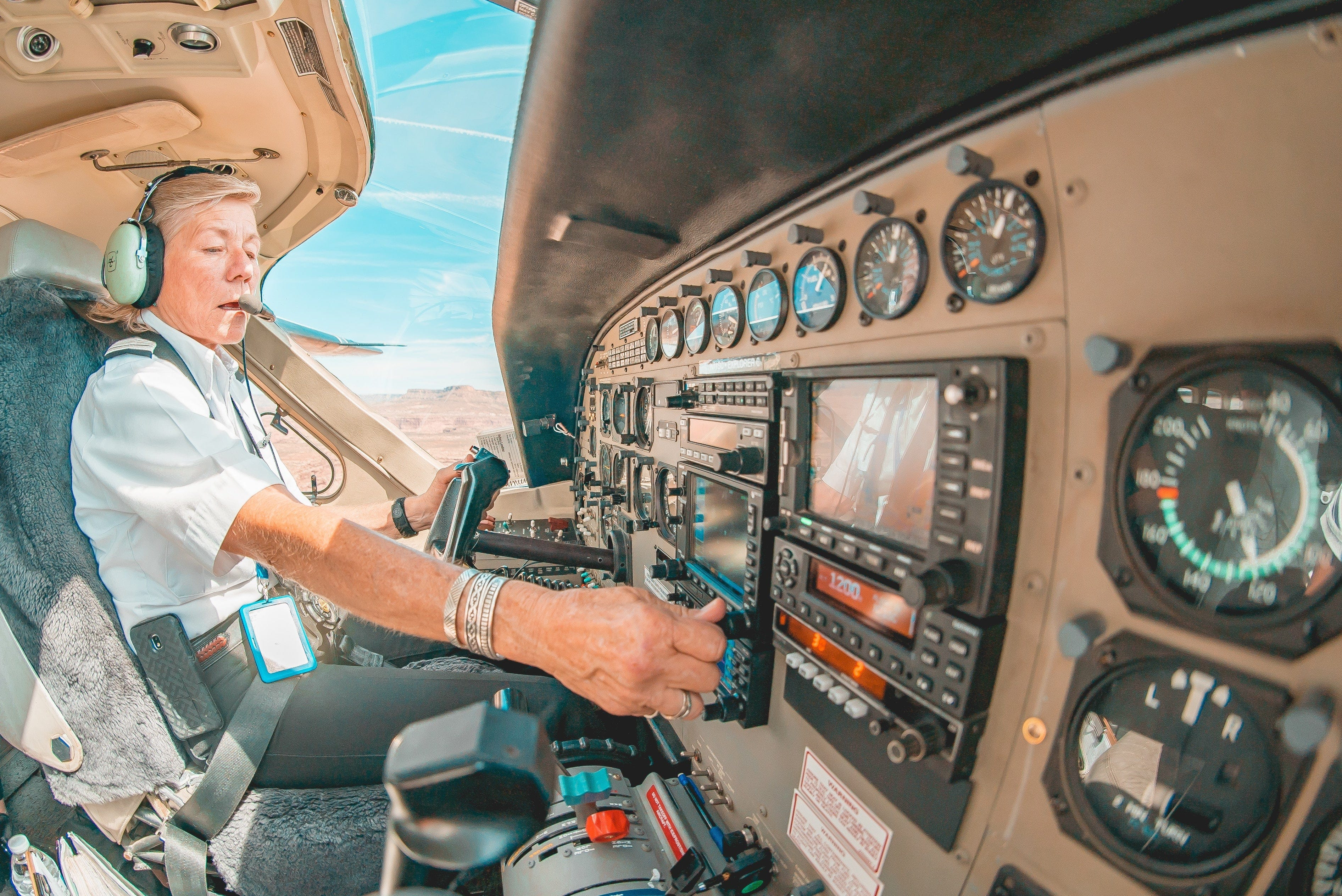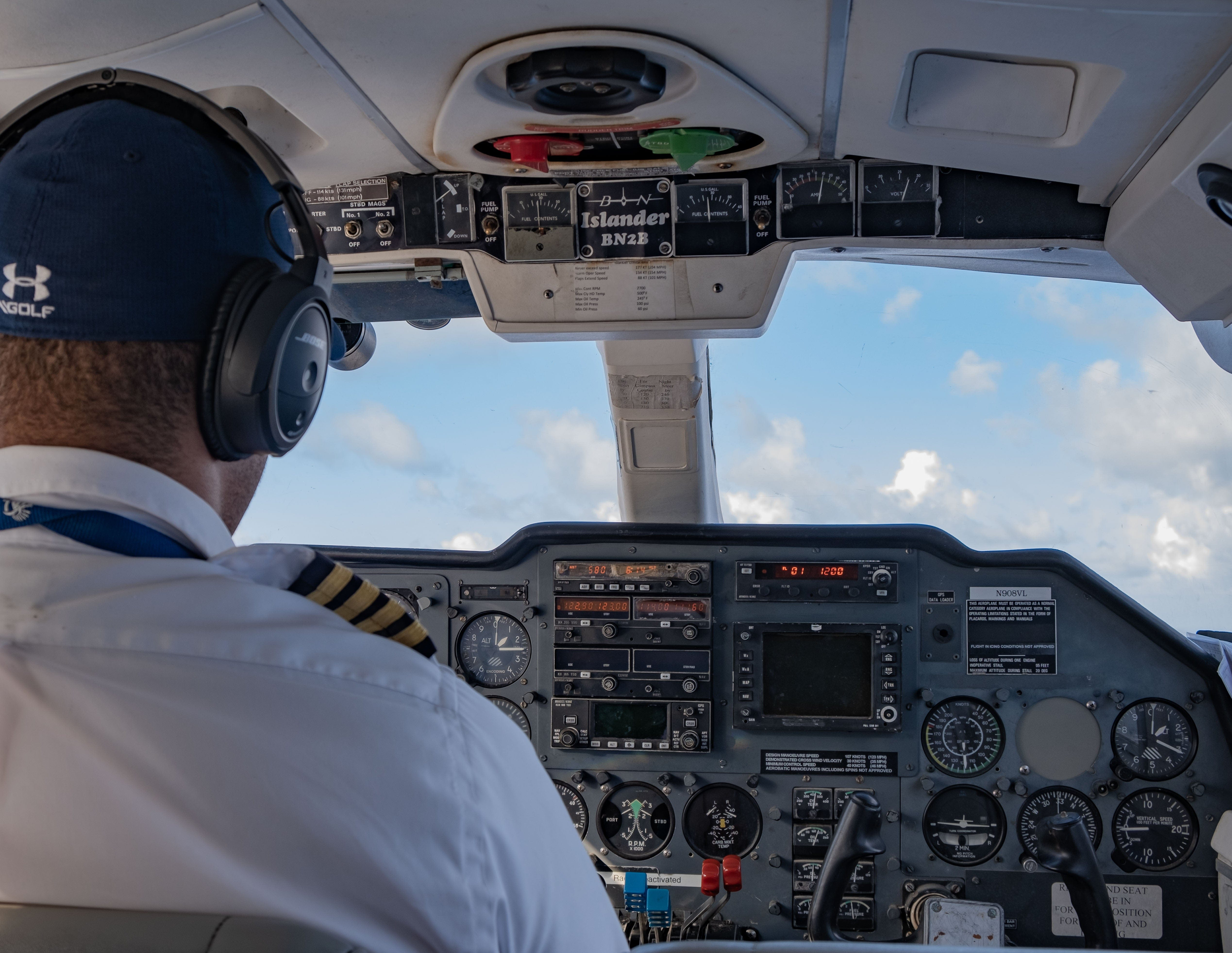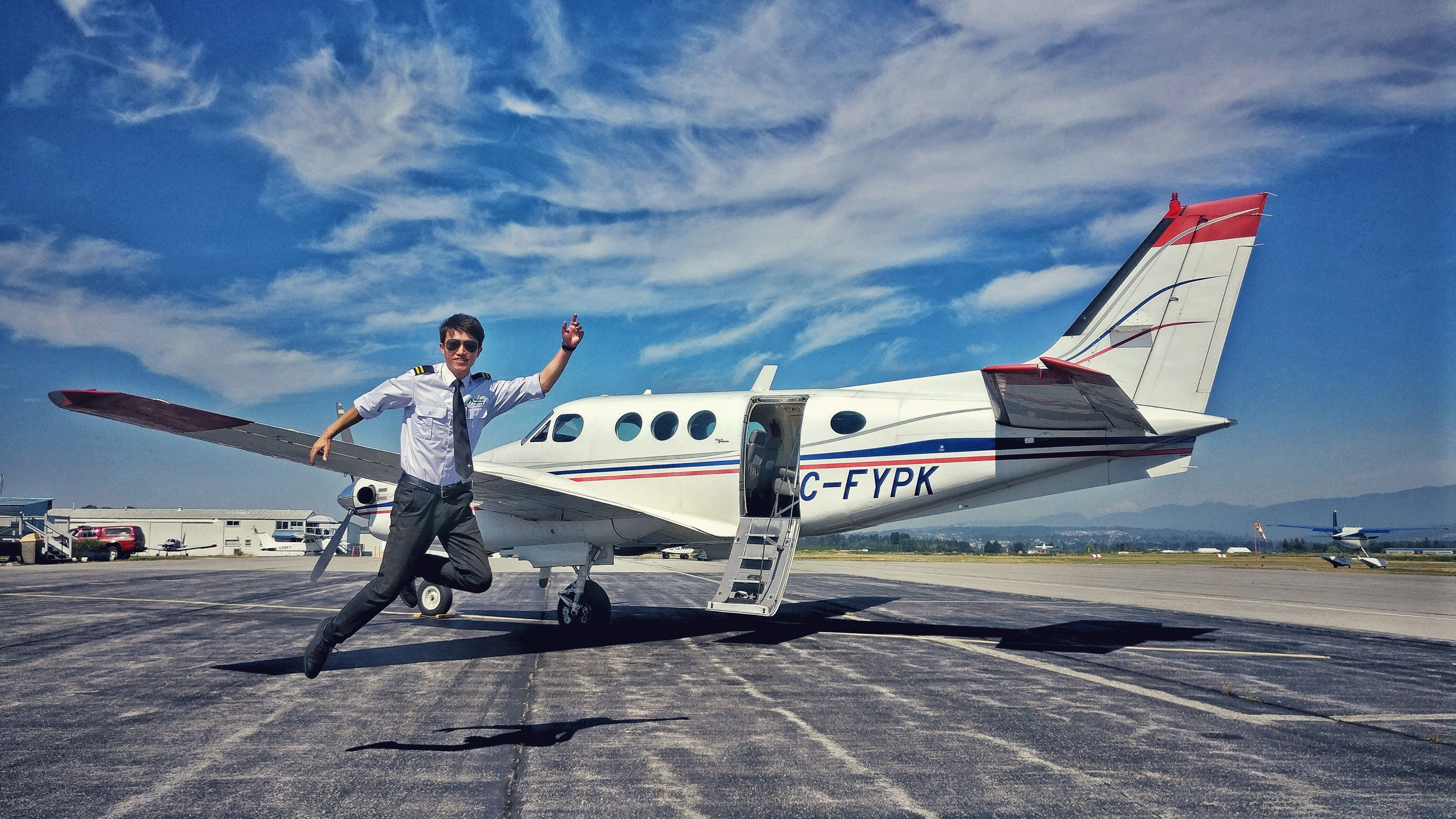Are you curious about How Often Do Pilots Fly and what their schedules look like? At flyermedia.net, we understand the allure of a career in aviation and the importance of understanding the demands and rewards that come with it, offering insights into flight time regulations and pilot work-life balance. This guide provides a detailed look into a pilot’s life, exploring flight hours, work schedules, and the realities of the profession, offering insights into career paths, flight training, and the latest aviation news.
1. Understanding a Pilot’s Daily Routine
 A Day in the Life: Pilot Preparing for Flight
A Day in the Life: Pilot Preparing for Flight
The daily routine of a pilot is anything but monotonous, presenting new challenges and destinations daily.
What does a pilot’s day typically involve?
A pilot’s day is incredibly diverse, with schedules varying widely. Unlike many jobs with a predictable routine, pilots often fly to different cities and countries, crossing multiple time zones. Some pilots manage numerous shorter flights each day, while others undertake fewer, longer journeys with overnight layovers.
A pilot’s day commences at the airport, where they check in with their airline before navigating security, flight bag in hand, to reach their assigned gate. Upon boarding, the pilot meets with their co-pilots and flight crew, dedicating themselves to essential pre-flight planning and checklists. Once clearance to depart is granted, the flight is underway.
Following landing, the pilot’s day might conclude—or not. For pilots managing quick turnarounds or short hops, they could be airborne again in as little as thirty minutes. After longer flights, pilots typically retreat to a hotel for a minimum of 8-10 hours of rest before their next airport return.
2. Monthly Flight Hours for Pilots
 Pilot in Cockpit During Flight
Pilot in Cockpit During Flight
Understanding the difference between “work” and “fly” is crucial for aspiring pilots.
How many hours do pilots typically fly in a month?
Airline pilots average around 75 flight hours each month. According to the U.S. Bureau of Labor Statistics, airline pilots average 75 flight hours per month, while regulations limit Part 121 pilots to a maximum of 100 flight hours in a calendar month and 30 hours over seven consecutive days. In addition to flying, pilots spend roughly 150 hours on flight planning, weather checks, and other ground duties, bringing their total monthly work hours to approximately 225.
Flying Mag supports these estimates, reporting an average of 85 flight hours and 80 ground hours per month for airline pilots, and commercial pilots operating under Part 135 regulations can log up to 120 flight hours per month and 34 hours in seven consecutive days.
3. Pilot Shift Durations Explained
How long are pilot shifts usually?
Pilot duty shifts range from nine to 14 hours for single pilots and 13 to 19 hours for flights with two or more pilots. These shifts include both duty time and flight time, and maximum flight time can vary from eight to 17 hours based on the flight’s start time and the number of pilots on board. Remember that pilots also dedicate significant time to non-flight duties such as weather checks and planning.
4. Daily Work Hours for Pilots
How many hours a day might a pilot work?
Pilots can work up to 19 hours a day, as flight time is included in their total duty time. However, regulations mandate at least an 8- to 10-hour rest period between shifts. This ensures that pilots do not consistently work extended duty shifts and that the 30-hour flight time limit per seven consecutive days is adhered to.
5. Yearly Flight Hour Limits for Pilots
What are the annual flight hour limits for pilots?
The FAA caps Part 121 pilots’ flight time at 1,000 hours per calendar year to mitigate pilot fatigue. Most ATP pilots fly around 900 hours annually. According to FAA CFRs, Part 121 pilots are capped at 1,000 flight hours per year, while Part 135 commercial pilots have a limit of 1,200 hours. The Bureau of Labor Statistics indicates that most ATP pilots average about 900 hours per year.
Staying organized is essential, so many pilots supplement their digital logbooks with a physical backup logbook.
6. Weekend Availability for Pilots
Do pilots typically get weekends off?
A career as a commercial or airline pilot isn’t typically a Monday to Friday, 9-to-5 job. Especially early in your career with lower seniority, expect to work many weekends and holidays. As flight assignments are based on seniority, you’ll likely gain more flexibility in choosing preferred days off as you advance.
7. Flight Schedule Assignment Processes
How are flight schedules assigned to pilots?
Airlines generally use a seniority-based system to assign flight schedules. In this system, the airline creates numbered lists of schedules, known as “lines.” Pilots then rank these schedules based on their preferences. Pilots with the highest seniority get their first choice, and the process continues down the list until all schedules are assigned, often leaving junior pilots with less desirable or reserve duties.
7.1. The Role of Reserve Pilots
What is the role of a reserve pilot?
Newer pilots often start on “reserve,” meaning they don’t have a fixed schedule and are called in to cover shifts on short notice due to various factors like weather, mechanical issues, or sick calls from scheduled pilots. While work-life balance can be challenging for reserve pilots, seniority allows for more predictable scheduling over time.
8. Time Away From Home for Pilots
 Pilot Taking a Break After Flight
Pilot Taking a Break After Flight
The frequency of being home varies based on the type of pilot job.
How often are pilots typically home?
The type of pilot job significantly affects how often you’re home. Regional airlines with frequent out-and-back flights may allow you to be home most nights, while long-haul pilots might be away for several days at a time. Long-haul pilots often receive extended time off between workdays in exchange for longer shifts, while short-haul pilots may be home nightly but have fewer days off.
8.1. Variables Affecting Time at Home
What variables influence a pilot’s time at home?
Pilots’ schedules can vary. Corporate and charter pilots often work a 7-day on, 7-day off schedule. Airline pilots might fly an average of 15 to 16 days a month, often in three- or four-day trips followed by several days off. Seniority and airline policies regarding flight trading can also provide more flexibility. Living in an airline’s base city also increases time at home, eliminating commute time after flights.
9. Balancing Family Life and a Pilot Career
Is it possible for pilots to have time for family?
Balancing an aviation career with family life requires communication, realistic expectations, flexibility, and patience. While being a pilot isn’t the most family-friendly career, many pilots successfully manage both. Junior pilots typically have about twelve days off a month, which can increase to around twenty days as they gain seniority. Access to free or reduced-fare air travel also allows pilots and their families to enjoy travel adventures during their time off.
 Pilot Family Vacation
Pilot Family Vacation
Family vacations are definitely possible with the right amount of planning.
10. Pilot Retirement Age Regulations
When do pilots typically retire?
The FAA mandates that all airline pilots retire by age 65. Some pilots may need to retire earlier if they develop a condition that prevents them from maintaining their FAA medical certificate.
11. Hourly Pay for Pilots: An Overview
How much do pilots generally make per hour?
Pilot pay varies widely depending on factors like education, certification, experience, and the airline. As of 2023, the hourly range for airline pilots is estimated to be between $71 and $108, with a median hourly pay of $88.
12. Annual Pilot Salaries: What to Expect
What is the average annual salary for pilots?
As of 2021, the median annual salary for commercial and airline pilots was $134,630. For “airline pilots, copilots, and flight engineers,” the median salary increases to $202,180. The lowest 10% of pilots earned less than $50,080, while the highest 10% earned over $208,000 annually, according to the U.S. Bureau of Labor Statistics.
Considering industry stability, the U.S. Bureau of Labor Statistics projects a strong 13% growth for airline and commercial pilots between 2020 and 2030, making it a promising career path.
Pro Tip: To gain a competitive edge in the aviation job market, consider enhancing your qualifications with additional certifications and advanced training. Explore the diverse range of pilot certifications and ratings available at flyermedia.net, and take a step further towards achieving your aviation career goals.
Frequently Asked Questions (FAQ)
1. How do weather conditions affect a pilot’s flight schedule?
Unfavorable weather can cause flight delays and cancellations, affecting pilot schedules and potentially extending their time away from home. Airlines prioritize safety, so pilots must adapt to changing weather conditions.
2. Can pilots trade flights with each other?
Yes, many airlines allow pilots to trade flights with each other, providing flexibility in their schedules. This depends on the airline’s policies and seniority.
3. What is the difference between a regional airline pilot and a major airline pilot in terms of schedule?
Regional airline pilots often fly shorter routes, allowing them to return home more frequently. Major airline pilots may fly longer international routes, resulting in longer periods away from home but potentially longer breaks between trips.
4. How does seniority affect a pilot’s schedule and quality of life?
Seniority plays a crucial role in determining a pilot’s schedule and quality of life. Higher seniority allows pilots to have more control over their schedules, preferred routes, and time off.
5. What are some common challenges pilots face regarding their work schedules?
Common challenges include irregular hours, time away from home, fatigue, and adapting to different time zones. Maintaining a healthy work-life balance can be difficult.
6. How do airlines ensure pilots get adequate rest?
Airlines follow strict regulations to ensure pilots get adequate rest. These regulations include minimum rest periods between flights and limitations on flight hours within a specific time frame.
7. What strategies can pilots use to manage fatigue and maintain their health?
Pilots can manage fatigue by prioritizing sleep, maintaining a healthy diet, exercising regularly, and using strategies such as power naps during layovers.
8. Are there any differences in flight schedules for cargo pilots compared to passenger pilots?
Cargo pilots often fly at night and may have more irregular schedules compared to passenger pilots. This can affect their sleep patterns and overall lifestyle.
9. How does the type of aircraft a pilot flies affect their schedule?
The type of aircraft can affect a pilot’s schedule. Pilots flying smaller aircraft may have more frequent, shorter flights, while those flying larger aircraft may have fewer, longer flights.
10. How can aspiring pilots prepare for the demanding schedules of a pilot career?
Aspiring pilots can prepare by understanding the demands of the job, developing strong time management skills, prioritizing their health and well-being, and seeking advice from experienced pilots.
Ready to take the next step in your aviation career? Visit flyermedia.net for comprehensive information on flight training, career opportunities, and the latest news in the aviation industry.
Conclusion
Understanding “how often do pilots fly” involves looking at numerous factors, from flight hours and shift lengths to lifestyle considerations. A pilot’s career presents unique challenges and rewards, demanding adaptability, resilience, and a passion for aviation. For more in-depth information about pilot training, aviation news, and career opportunities, visit flyermedia.net.
FlyerMedia.net is your go-to resource for all things aviation, offering up-to-date information on flight regulations, pilot certifications, and industry trends. Whether you’re an aspiring pilot or a seasoned aviator, we provide the insights you need to navigate the dynamic world of aviation.
Address: 600 S Clyde Morris Blvd, Daytona Beach, FL 32114, United States
Phone: +1 (386) 226-6000
Website: flyermedia.net